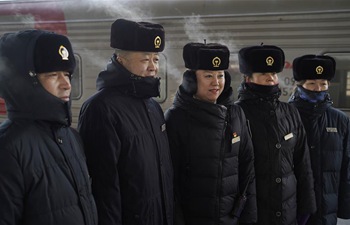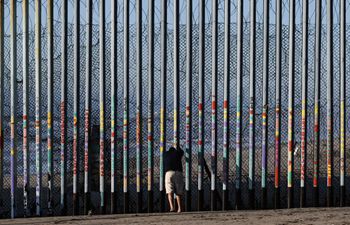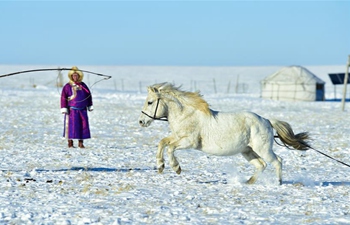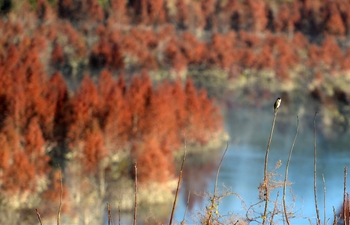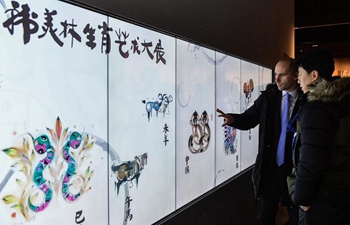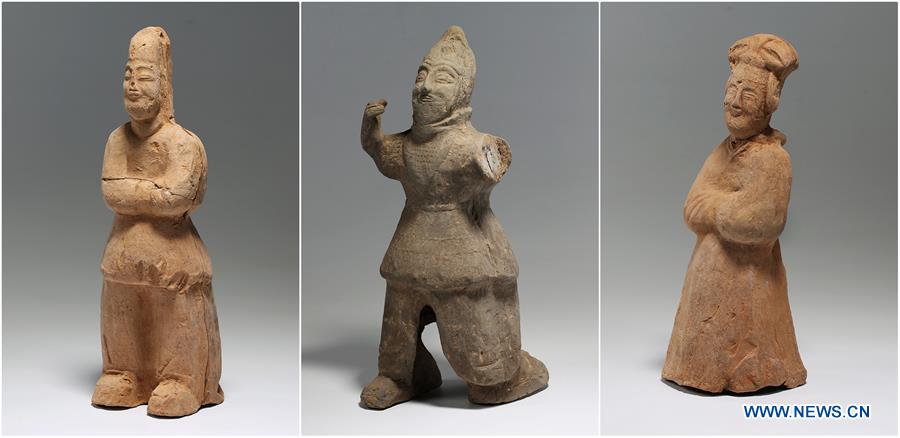
Combo file photo shows earthenware unearthed from a tomb dating back to the Sixteen Kingdoms (304-439 A.D.) in Leijia Village of Xixian New Area, northwest China's Shaanxi Province. Archaeologists in northwest China's Shaanxi Province said Friday they have discovered an ancient tomb group dating back more than 1,500 years in a village in the province. Archaeologists with the Shaanxi Academy of Archaeology said that a cluster of 12 tombs dating back to the Sixteen Kingdoms (304-439 A.D.) was excavated from 2017 to 2018 in Leijia Village of Xixian New Area, along with sacrificial sites and millet. (Xinhua)
XI'AN, Jan. 11 (Xinhua) -- Archaeologists in northwest China's Shaanxi Province said Friday they have discovered an ancient tomb group dating back more than 1,500 years in a village in the province.
Archaeologists with the Shaanxi Academy of Archaeology said that a cluster of 12 tombs dating back to the Sixteen Kingdoms (304-439 A.D.) was excavated from 2017 to 2018 in Leijia Village of Xixian New Area, along with sacrificial sites and millet.
The tombs are laid out in two rows, and each tomb consists of a tomb passage, a door and a path leading to the coffin chamber, according to Liu Daiyun, a researcher with the academy.
"Some new burial customs, such as placing stones in a small pit at the corner of the tomb and the feet of some of the bodies in the tombs being held down by square stones, have been discovered for the first time," Liu said.
The majority of the burial objects were pottery ware, including figurines of warriors, servants and animals, jars and lamps. Some bronze accessories such as mirrors, stamps, hair clasps and pins, bracelets and bells and several kinds of bronze coins were unearthed.
Among these coins, a rare coin cast in the Later Zhao, one of the kingdoms during this period, was an important reference for archaeologists to determine the date of the tombs, Liu said.
Archaeologists also found skulls of piglets in two tombs and a large amount of weathered millet shell.
"Based on the distribution of the tombs, it can be determined that the tombs belonged to a family. We will further determine the relationships of the tomb owners through DNA tests," Liu added.





